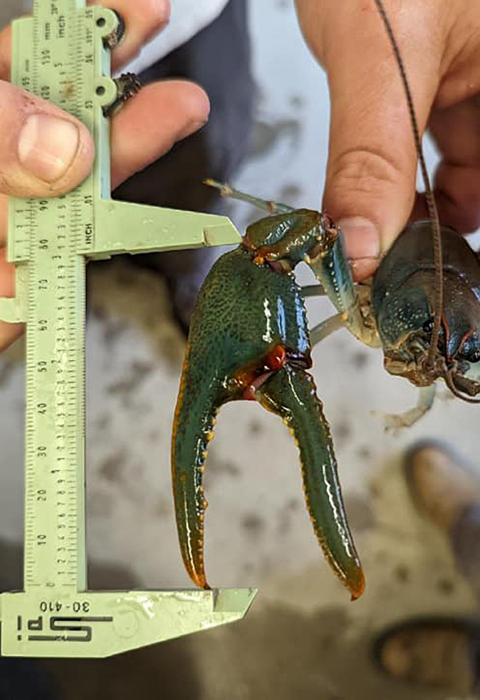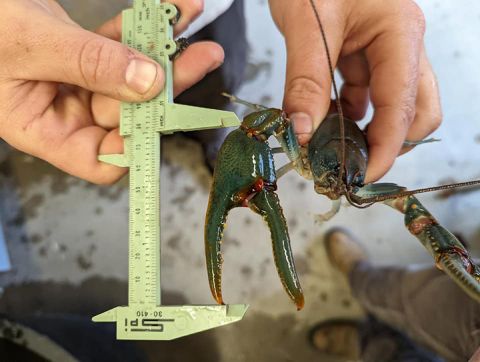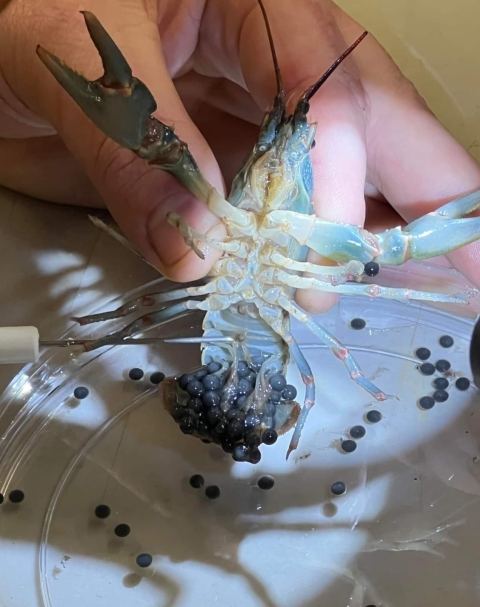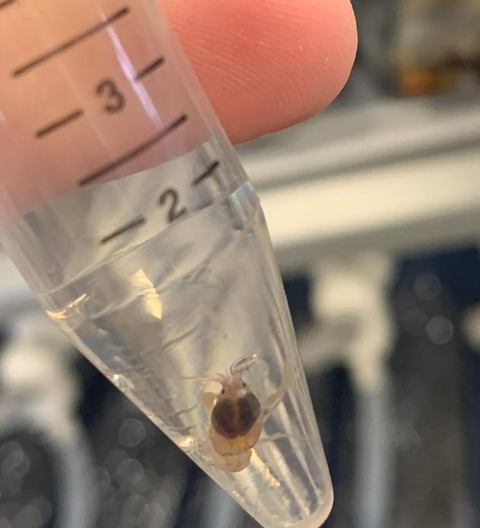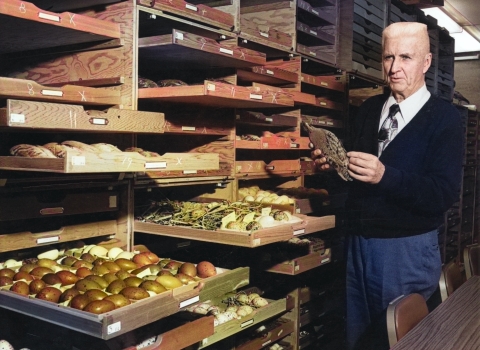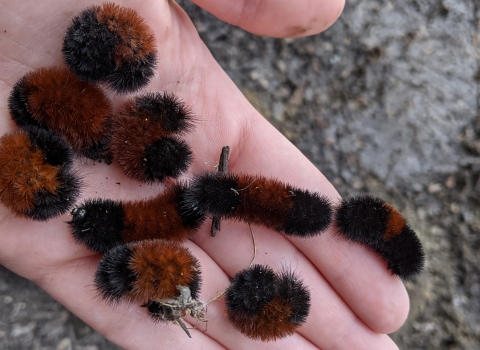The Big Sandy River meanders through the rugged terrain and thick forests of the Cumberland Mountain region of West Virginia, Virginia, and Kentucky. The river is famous for its numerous sandbars and beautiful waterways, but its lesser-known fame comes in the form of a rare crustacean that calls the river home. The bright blues, greens and teals of the federally threatened Big Sandy crayfish is a stark contrast to the sandy, pebbled river bottom they call home.
These large crayfish are burrowers, excavating their shelters under large boulders and shallow stream cobbles. Like all crayfish, they play many important roles in our streams — feeding on macroinvertebrates in the summer months, like small riverine predators. They are also shredders and actively break down leaves and other organic matter whose nutrients are used by other river organisms in the food chain. Crayfish also play an important role in the food web as prey for other predators including fish, birds, reptiles, amphibians and mammals.
Crayfish rely on healthy streams and waterways for survival and serve as an indicator species for the biologists studying them (more crayfish, healthier ecosystem). Effects linked to mining, timber harvest and other human activities have shrunk the range of Big Sandy crayfish and left them vulnerable to extinction. In 2016, Big Sandy crayfish were protected as threatened under the Endangered Species Act.
Today, the federally threatened crayfish are found in four isolated populations across the upper Big Sandy River watershed, and we are working on ways to protect their habitat and boost their populations in the wild.
At White Sulphur Springs National Fish Hatchery in West Virginia, Service biologists team with the Virginia Department of Wildlife Resources, on efforts to begin propagating this unique species in a hatchery setting for future restoration efforts.
“I grew up with these crayfish near my home and where I fished, and I feel a personal connection to restoring their populations in the wild," said Service fish biologist Andrew Phipps. “Big Sandy crayfish are a crucial part of the ecosystem, and they are creatures worth conserving.”
Before they could breed the crayfish, biologists had to understand how they procreate in the wild. Big Sandy crayfish typically spawn in early to midsummer and lay eggs in late summer and early fall. Males place a packet of sperm within a pocket on the female, where she stores it over the winter. In the spring, she will spin a reproductive tent where the eggs are rolled over the sperm packet and externally fertilized. Recreating this delicate process in a hatchery setting proposes a new conservation challenge for biologists working with the species.
Between 2021 and 2022, biologists at the hatchery successfully produced the first juvenile Big Sandy crayfish in captivity, a breakthrough for the recovery of the species and an important steppingstone to future stocking efforts. Careful consideration is given to the timing and collection of broodstock broodstock
The reproductively mature adults in a population that breed (or spawn) and produce more individuals (offspring or progeny).
Learn more about broodstock so as not to impact the wild population, as well as caring and raising for the tiny eggs and juveniles.
In 2023 and beyond, the hatchery plans to continue to develop and refine methods for propagating the Big Sandy crayfish, intending to ultimately apply these same methods to conserve the endangered Guyandotte River crayfish.
Big Sandy crayfish can live five to seven years in the wild, but they don’t reproduce until age three or four. This means populations can take a long time to rebound on their own, if at all. With propagation methods well underway, biologists are hopeful their strategic conservation efforts will bring more color to the local river bottom with the return of the vibrant Big Sandy crayfish.
